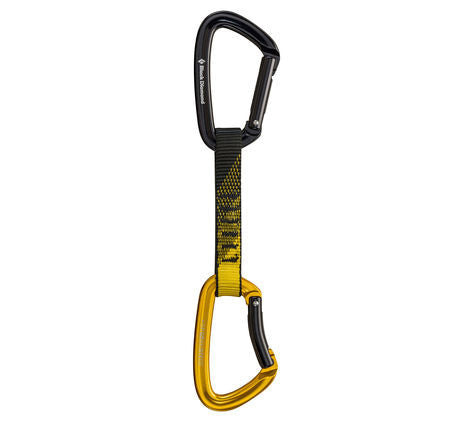

This can be very dangerous as small abrasions made by the bolt can easily wear your rope. Many manufacturers are now making the bolt-end carabiner come standard in silver (to match the bolt color), and are coloring the rope-end with other anodizations.ĭo not mix (interchange) bolt-end carabiners and rope-end carabiners. We have classified these as bent gates since they're not totally straight.

The debate comes on opening speed as some are much faster while others can be a struggle. Screw gates are generally lighter and cheaper.Īuto-locking gates are usually considered safer as they automatically snap shut, not counting on one's memory to close and are harder to accidentally unlock. to rack (hold) your gear on your harness.Locking Locking main non-locking carabiners uses: Learn More Pros and cons of each shape, graphs and more examples Buy if you’re the curious type they’re not cheap, and there’s not many in the US. Semi-circle: Mostly used by Search and Rescue as this is a great way to secure a chest harness.ģ-D: Designed to increase the gate opening and to reduce the chance that the rock will rub your rope and/or the locking gate open. They're used when setting up a semi-permanent rappel station (not used while climbing up). These semi-permanent links ensure the gate will not accidentally open. Quick Link (aka Oval link, Maillon Raptide)Īlthough most climbers wouldn’t refer to this shape as a “carabiner” they are certified by the same EN standard as all the other carabiners. Downside: Smaller gate openings than the offset D. Since the strongest part of the carabiner carries the weight, D’s are the strongest shape. D (aka symmetric D)ĭ’s have a symmetrical shape that sets the rope closer to the spine, putting the load on the spine (versus sharing the load with the weaker gate side, like the oval). The bonus is, your gear rests squarely in the middle, so it's great for holding nuts, pulleys, and prusiks. Since the weaker gate shares the load with the spine, oval biners aren’t as strong as shapes that direct the load to the spine. When loaded, the pressure is shared equally on both sides of the ‘biner.

The first carabiner shape to be mass produced. They are almost always locking and are generally heavier (than D/offset D's) because they need more material to gain back strength lost due to their shape. The wide top means they can hold a lot of gear. The Pear/HMS carabiner is used primarily for belaying and/or setting a powerpoint in an anchor. Used for top and bottom quickdraws, as racking carabiners, and lightweight lockers. When loaded, most of the weight is transferred to the spine of the carabiner making them stronger than most other shapes. Offset D (aka Modified D)Ī modification of the standard D shape, the top of an offset D is much wider, allowing for a larger (and superior) gate opening. In grams, the weight, as stated by the manufacturer/brand.Īlmost every carabiner you use will be non-locking offset D’s, with the exception of a Pear/HMS locker as your belay ‘biner.


 0 kommentar(er)
0 kommentar(er)
